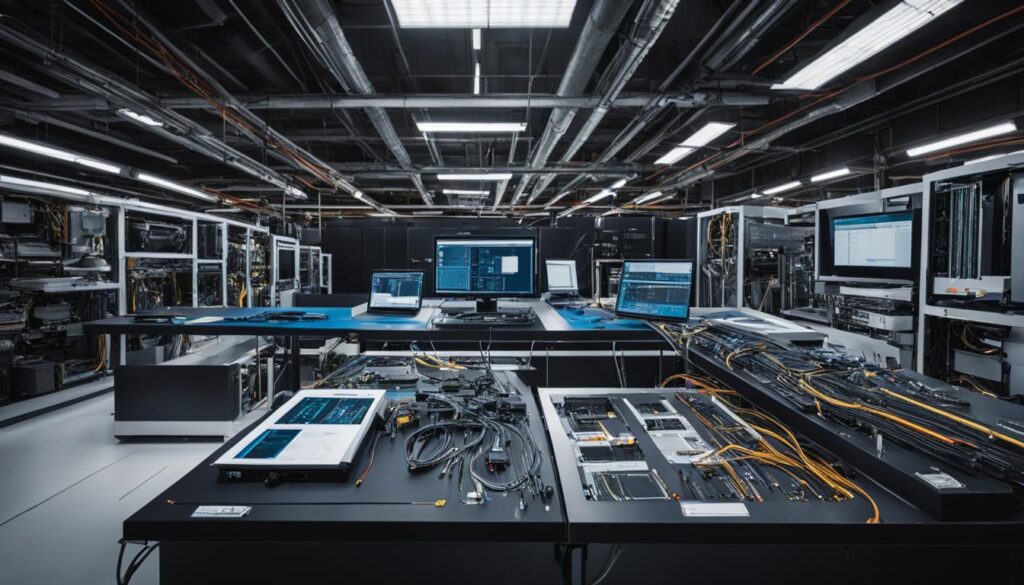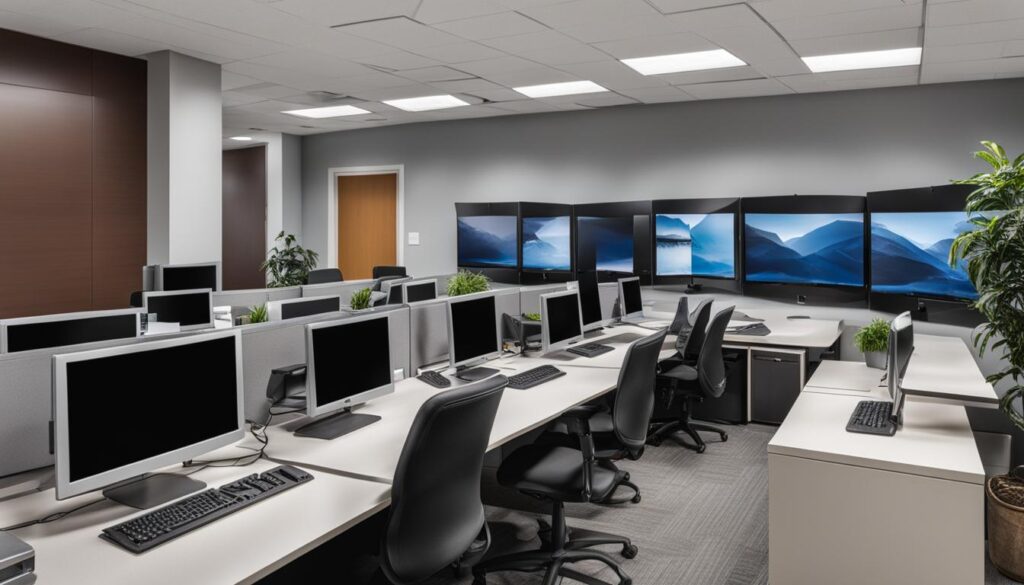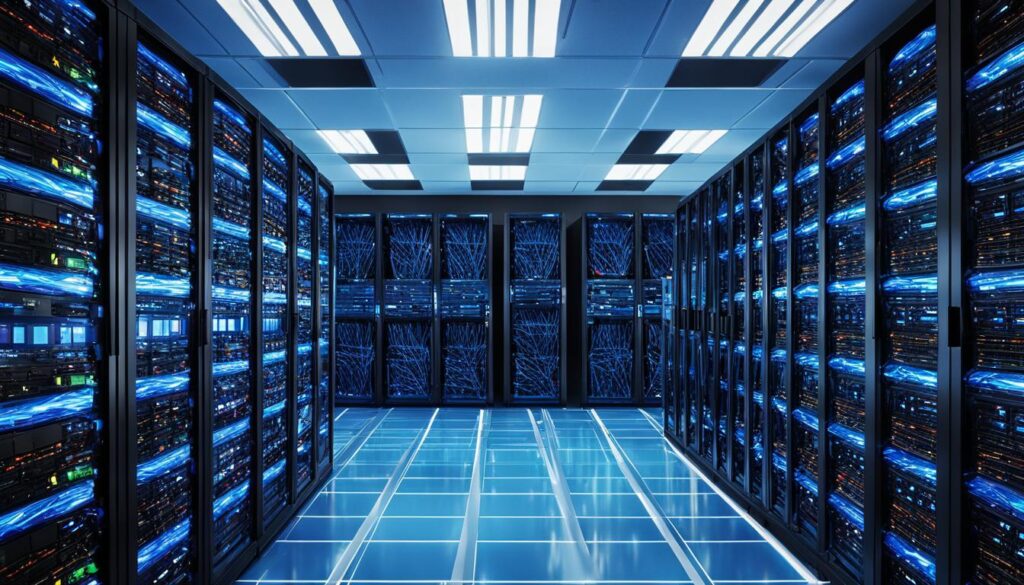Technology refresh is crucial to staying competitive in the rapidly evolving tech landscape.
It periodically replaces outdated hardware and software with newer, more advanced solutions. By embracing technology refresh, businesses can ensure that their IT infrastructure remains reliable, efficient, and secure.
Implementing a technology refresh strategy allows organizations to leverage the benefits of modern technology, such as improved performance and enhanced capabilities.
It also helps businesses reduce operating costs, enhance productivity, strengthen security measures, and contribute to environmental sustainability.
Contents
- 1 The Benefits of Technology Refresh
- 2 The Importance of a Technology Refresh Lifecycle
- 3 The Financial Case for Technology Refresh
- 4 Enhancing Productivity and Security with Technology Refresh
- 5 Environmental Benefits of Technology Refresh
- 6 Infrastructure Consolidation with Technology Refresh
- 7 Conclusion
- 8 FAQ
- 8.1 What is technology refresh?
- 8.2 Why is technology refresh important?
- 8.3 What are the benefits of technology refresh?
- 8.4 What is the technology refresh lifecycle?
- 8.5 What are the best practices for technology refresh?
- 8.6 How does technology refresh reduce operating costs?
- 8.7 How does technology refresh enhance productivity and security?
- 8.8 What are the environmental benefits of technology refresh?
- 8.9 How does technology refresh lead to infrastructure consolidation?
- 9 Source Links
Key Takeaways:
- Technology refresh involves replacing outdated hardware and software with newer solutions.
- A technology refresh strategy is essential for businesses to remain competitive and efficient.
- Benefits of technology refresh include improved reliability, increased performance, and reduced operating costs.
- Upgrading technology enhances productivity, strengthens security, and contributes to environmental sustainability.
- Planning and monitoring are key aspects of a successful technology refresh lifecycle.
The Benefits of Technology Refresh
Implementing a technology refresh strategy offers several benefits to businesses. Firstly, regular hardware and software upgrades help to improve reliability as aging technology becomes less dependable over time.
Additionally, refreshing technology can increase performance and efficiency, with modern hardware offering faster processing speeds and improved capabilities.
“By following a defined technology refresh process, businesses can ensure that upgrades are planned and budgeted for, reducing the risk of unexpected expenses,”
A well-designed technology refresh strategy also allows businesses to take advantage of the latest innovations and features, enabling them to stay ahead of competitors.
Also Read:Asynchronous Technologies Defined for You
Benefits of Technology Refresh
| Benefits | Description |
|---|---|
| Improved Reliability | Regular upgrades ensure that technology remains dependable. |
| Increased Performance | Newer hardware offers faster processing speeds and improved capabilities. |
| Efficiency | Modern technology enhances workflow and productivity. |
| Reduced Expenses | Proper planning and budgeting decrease the risk of unexpected costs. |
| Competitive Advantage | Staying updated with the latest innovations helps businesses stay ahead. |
By investing in technology refreshments, businesses can unlock these benefits and position themselves for long-term success.
The Importance of a Technology Refresh Lifecycle
A technology refresh lifecycle is crucial for ensuring efficient and effective upgrades in your organization.
This comprehensive approach includes planning, budgeting, implementation, and monitoring phases to ensure a seamless transition to new technology.
Proper technology refresh planning is essential to aligning upgrades with your organization’s goals and priorities.
It involves assessing your current technology infrastructure, identifying areas for improvement, and creating a roadmap for upgrades.
“Technology refresh planning ensures that your upgrades are strategic and support your overall business objectives.”
By following best practices for technology refresh, you can ensure that your upgrades yield the desired results. Regular assessments of your technology infrastructure allow you to identify outdated systems and devices that require upgrading.
This practice enables you to proactively address performance or security gaps before they impact your operations.
Best Practices for Technology Refresh:
- Conduct regular assessments of the current technology infrastructure.
- Identify areas for improvement and prioritize upgrades based on business needs.
- Create a roadmap for implementing upgrades over time.
- Consider scalability and future technology trends when planning upgrades.
- Ensure proper testing and evaluation of new technology before deployment.
- Train employees on using the upgraded technology to maximize its benefits.
- Monitor the performance of upgraded systems to identify any issues and make necessary adjustments.
These best practices will help you optimize the technology refresh process and make informed decisions about your IT investments.
Regular monitoring of the performance of upgraded systems is crucial for ensuring their effectiveness.
By closely monitoring and assessing the performance, you can quickly identify any issues, measure the impact of the upgrades, and make necessary adjustments.
Also Read:Common IT Axiom for Tech Professionals Explained
An effective technology refresh lifecycle ensures your organization remains up-to-date, agile, and competitive in the ever-evolving technology landscape.

Implementing a technology refresh lifecycle is a best practice that enables you to align your upgrades with your business goals, evaluate and optimize your technology infrastructure, and keep pace with the rapid advancements in the tech industry.
The Financial Case for Technology Refresh
Regarding technology refresh, upfront investment might give you pause, but it’s crucial to consider the long-term financial benefits. Outdated hardware and software often come with higher maintenance and repair costs, not to mention the increased downtime due to failures.
Your business can significantly reduce these operating costs by replacing aging technology with newer, more reliable options.
Moreover, modern hardware and software are designed with energy efficiency in mind, leading to lower electricity consumption and reduced cooling costs in your data centers.
These cost savings can significantly impact your organization’s bottom line.
Let’s take a closer look at the financial advantages of technology refresh:
“Technology refresh helps businesses reduce operating costs by replacing outdated hardware and software with more reliable options.”
Reduced Maintenance and Repair Costs
Outdated technology often requires frequent maintenance and repairs, costing your business valuable time and money. By upgrading to newer technology, you can minimize the need for constant fixes and reduce associated expenses.
Preventive maintenance becomes easier, driving down your overall costs and allowing your IT team to focus on more strategic initiatives.
Decreased Downtime and Productivity Loss
When outdated technology fails, it can lead to significant downtime, disrupting your business operations and impacting productivity.
With a technology refresh, you can minimize these instances of downtime and ensure that your employees can work efficiently without interruptions.
This increased uptime translates into higher productivity and better financial performance for your organization.
Energy Efficiency and Cost Savings
Modern hardware and software are designed to be energy efficient, consuming less electricity and generating less heat. By adopting these energy-efficient technologies, you can lower your electricity bills and reduce cooling costs in your data centers.
Over time, these savings can add up and positively contribute to your organization’s financial health.

Planning for IT Budget
Taking a proactive approach to technology refresh allows your organization to plan for IT expenditures and avoid unexpected expenses.
By incorporating technology refresh as a regular part of your budgeting process, you can allocate resources more effectively and strategically.
This ensures you can keep your technology infrastructure up-to-date without burdening your financial resources.
A well-executed technology refresh strategy can deliver significant financial benefits to your organization.
By reducing operating costs, improving energy efficiency, and planning for IT expenditures, you can maximize your return on investment and stay ahead of the competition.
| Financial Benefits of Technology Refresh |
|---|
| Reduced maintenance and repair costs |
| Minimized downtime and productivity loss |
| Energy efficiency and cost savings |
| Improved IT budget planning |
Enhancing Productivity and Security with Technology Refresh
Upgrading technology can have a significant impact on improving productivity and heightened security. Older hardware and software can limit employees’ multitasking ability, decreasing efficiency.
Businesses can improve productivity and workflow by providing employees with modern, high-performance technology. Additionally, outdated technology poses security risks, as it may not have the latest security features and may be more vulnerable to cyberattacks.
Upgrading to newer technology with enhanced security measures can help protect sensitive data and prevent potential breaches.

Environmental Benefits of Technology Refresh
Upgrading your hardware during a technology refresh not only improves performance and security but also has significant environmental benefits.
By adopting environmentally-friendly hardware and reducing your carbon footprint, you can contribute to a more sustainable future.
When you upgrade to energy-efficient hardware, you reduce power consumption and lower carbon emissions. Older power supplies are often less efficient, leading to wasted electricity and increased cooling costs in data centers.
You can minimize your environmental impact by using modern hardware designed to be energy efficient and incorporating power-conservation features.
Also Read: Discover Which Technology Precedes Swordsmen
Take a moment to consider the environmental benefits of technology refresh:
- Reduced Power Consumption: Energy-efficient hardware consumes less power during operations, reducing electricity usage. This not only helps to reduce your energy bills but also decreases your carbon footprint.
- Lower Carbon Emissions: By reducing power consumption, you indirectly contribute to reducing carbon emissions. Using environmentally friendly hardware during technology refreshments decreases the demand for electricity generated from fossil fuels, thereby mitigating the environmental impact.
- Decreased Cooling Costs: Energy-efficient hardware generates less heat during operation, reducing the need for excessive cooling in data centers. This saves energy and reduces the associated carbon emissions from cooling systems, further contributing to a greener IT infrastructure.
Embracing technology refresh with environmentally friendly hardware aligns your business with sustainability efforts and showcases your commitment to reducing environmental impact.
| Environmental Benefits | Explanation |
|---|---|
| Reduced Power Consumption | Energy-efficient hardware consumes less power, lowering energy bills and reducing environmental impact. |
| Lower Carbon Emissions | By decreasing power consumption, businesses contribute to reducing carbon emissions and combat climate change. |
| Decreased Cooling Costs | Energy-efficient hardware generates less heat, reducing the need for excessive cooling and saving energy. |
Quote:
“Technology refresh is not just about improving performance; it is also about making environmentally conscious choices. By upgrading to energy-efficient hardware, businesses can reduce power consumption and contribute to a greener future.”
– John Davis, Chief Technology Officer at GreenTech Solutions
As businesses become more environmentally aware, technology refresh offers an opportunity to align your IT infrastructure with sustainability goals. By embracing environmentally friendly hardware, you can reduce your carbon footprint, lower energy costs, and positively impact the environment.
Infrastructure Consolidation with Technology Refresh
Technology refresh presents an opportunity for businesses to consolidate their infrastructure.
By upgrading to newer technology, specifically modern servers that are more powerful and efficient, organizations can optimize their IT infrastructure and achieve infrastructure consolidation.
This consolidation allows businesses to run their workloads on fewer physical machines, resulting in significant benefits.
One of the primary advantages of infrastructure consolidation is the space-saving potential. Modern servers offer higher processing power, allowing multiple workloads consolidated onto a single server.
This reduction in physical machines saves valuable office space and simplifies maintenance and management processes.
Furthermore, infrastructure consolidation reduces power and cooling costs. By running workloads on fewer servers, businesses can minimize energy consumption and lower their carbon footprint.
This aligns with environmental sustainability goals and contributes to cost savings on electricity and cooling expenses.
A consolidated infrastructure also simplifies IT operations and improves efficiency.
With fewer physical machines to manage and maintain, businesses can streamline their IT workflows and reduce the time and effort required for system updates, backups, and troubleshooting
. This allows IT teams to focus on more strategic tasks and initiatives.
Finally, infrastructure consolidation enables businesses to save costs that can be invested in other projects.
Organizations can optimize their IT budget and allocate resources to areas that drive business growth and innovation by reducing the number of servers and associated equipment.
To visually illustrate the benefits of infrastructure consolidation, refer to the table below:
| Benefits of Infrastructure Consolidation with Technology Refresh |
|---|
| Space-saving potential |
| Reduction in power and cooling costs |
| Simplified IT operations and improved efficiency |
| Cost savings for investment in other projects |
By leveraging technology refresh and implementing infrastructure consolidation, businesses can optimize their IT infrastructure, reduce costs, and enhance operational efficiency.

Conclusion
In conclusion, technology refresh is a crucial factor in staying ahead in today’s technology-driven world.
By regularly upgrading hardware and software, businesses can reap numerous benefits. Improved reliability ensures smooth operations, while enhanced productivity allows teams to work more efficiently.
Robust security measures protect valuable data, reducing the risk of breaches and cyberattacks. Moreover, revamping technology lowers operating costs and a smaller carbon footprint, contributing to financial and environmental sustainability.
To make the most of technology refresh, it is essential to implement a well-defined strategy based on best practices and a deep understanding of your business goals.
Doing so ensures that your organization remains competitive and adaptable in the ever-evolving tech landscape. Embrace the potential of technology refresh and unlock new opportunities for long-term success and growth.
In summary, technology refresh is not merely an option but a necessity. Embrace the power of modernization, optimize your operations, and equip your workforce with the tools they need to thrive.
Stay ahead of the curve, take advantage of the benefits technology refresh brings, and position your business for continued success in the digital age.
FAQ
What is technology refresh?
Technology refresh periodically replaces outdated hardware and software to keep up with advancing technology.
Why is technology refresh important?
Technology refresh is crucial for businesses to stay competitive in today’s fast-paced tech landscape.
What are the benefits of technology refresh?
Implementing a technology refresh strategy offers several benefits, including improved reliability, enhanced performance, and efficiency, staying ahead of competitors, and planned budgeting to reduce unexpected expenses.
What is the technology refresh lifecycle?
The technology refresh lifecycle includes planning, budgeting, implementation, and monitoring phases to ensure efficient and effective upgrades.
What are the best practices for technology refresh?
Best practices for technology refresh include conducting regular assessments, identifying areas for improvement, creating a roadmap, and monitoring performance to make necessary adjustments.
How does technology refresh reduce operating costs?
By upgrading to newer, more reliable technology, businesses can reduce maintenance and repair costs, minimize downtime, and benefit from energy-efficient hardware.
How does technology refresh enhance productivity and security?
Upgrading to modern, high-performance technology improves workflow and multitasking capabilities, while enhanced security features protect sensitive data from cyberattacks.
What are the environmental benefits of technology refresh?
Technology refresh allows businesses to upgrade to energy-efficient hardware, reducing power consumption, carbon emissions, and cooling costs in data centers.
How does technology refresh lead to infrastructure consolidation?
By using more powerful and efficient servers, businesses can run workloads on fewer physical machines, saving space, power, and cooling costs.




